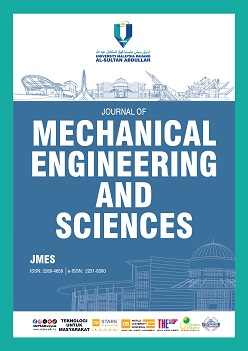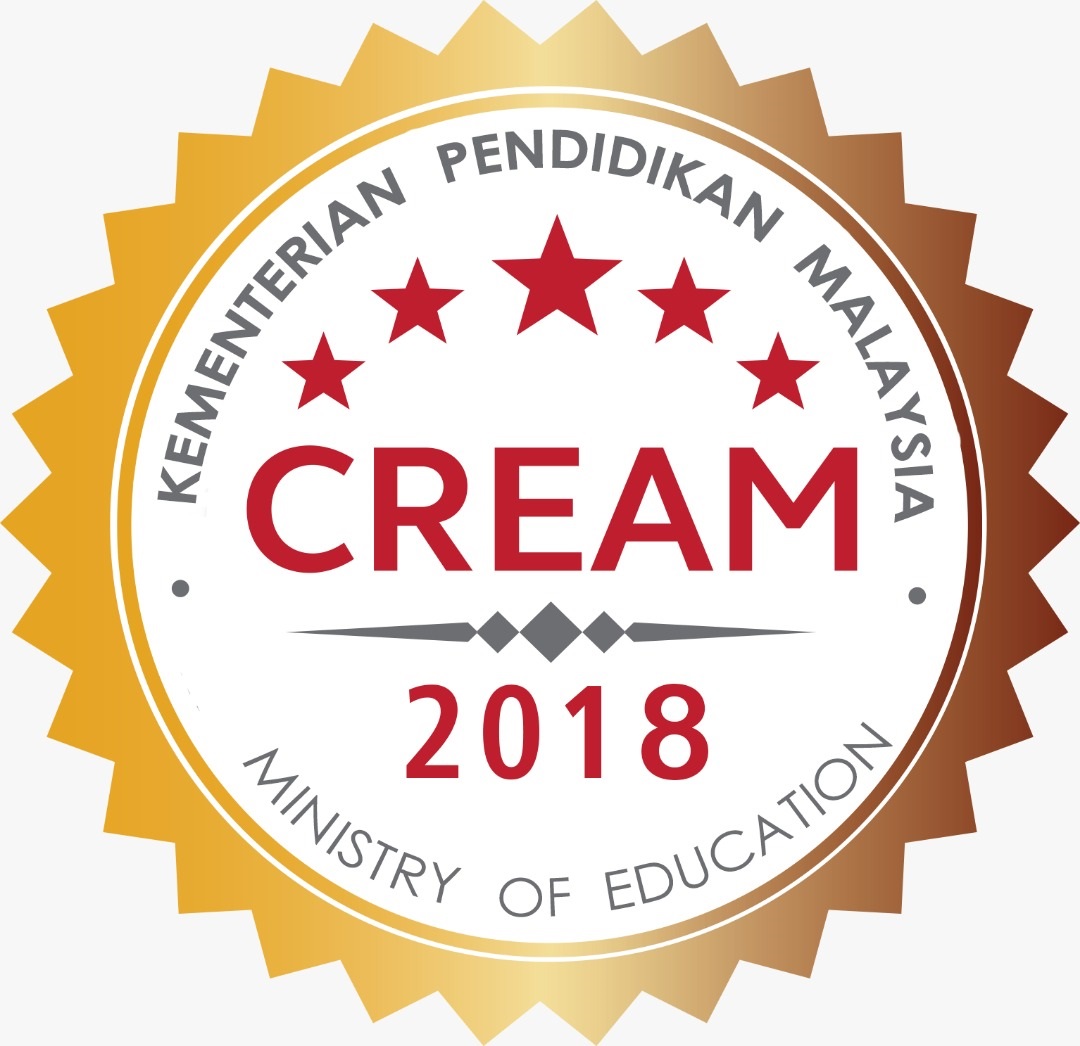Development of an energy-efficient hybrid electric vehicle air-conditioning system test rig coupled with nanolubricant
DOI:
https://doi.org/10.15282/jmes.19.1.2025.8.0825Keywords:
Nanolubricants, Electric Compressor, Automotive Air Conditioning, Consumption, Aluminium OxideAbstract
The development of an energy-efficient electric automotive air conditioning system is crucial in addressing the growing concerns over energy consumption and environmental impact in the transportation sector. Prior to assessing the impact of nanolubricants on energy consumption and performance enhancement, a hybrid electric vehicle air conditioning system test rig was developed. Hence, this study focuses on the research and development of an innovative air-conditioning system that incorporates nanolubricants to improve efficiency, thereby reducing overall energy consumption and emissions. The AI2O3/POE nanolubricant was synthesized using a two-step method with a volume concentration of 0.15%. The performance of the hybrid electric vehicle air-conditioning system was evaluated based on its cooling capacity and power consumption. The results indicated that compressor work and power consumption were reduced by up to 21.23% and 36.36%, respectively. Based on these findings, a 0.15 vol.% AI2O3/POE nanolubricant, combined with a 350 g initial refrigerant charge, was determined to be optimal for performance enhancement and power consumption reduction. The findings of this study have provided significant insights into the potential of nanolubricants to enhance the performance of electrically driven compressor (EDC) air-conditioning systems in hybrid and electric vehicles while reducing energy consumption at various operating speeds.
References
[1] J. L. Dupont, “The role of refrigeration in the global economy,” International Institute of Refrigeration [Online], 2019. Available: https://iifiir.org
[2] S. S. Jose, R. K. Chidambaram, “Electric vehicle air conditioning system and its optimization for extended range - A review,” World Electric Vehicle Journal, vol. 13, no. 11, p. 204, 2022.
[3] IEA, “World Energy Statistics and Balances,” International Energy Agency [Online], 2024. Available: https://www.iea.org/data-and-statistics/data-product/world-energy-statistics-and-balances
[4] IEA, “Cooling on the Move: The Future of Air Conditioning in Vehicles,” International Energy Agency [Online], 2019. Available: https://www.iea.org/reports
[5] J. Y. Kim, J. Kim, H. Jeong, G. T. Kim, J. J. Park, T. Kim, “Enhancement of electric vehicle air-conditioning system with dual condensers,” Applied Thermal Engineering, vol. 236, p. 121459, 2024.
[6] S. S. Chaudhari, A. H. Pundkar, J. Giri, T. Sathish, A. S. Daryapurkar, R. Chadge, et al., “Optimizing air conditioning efficiency: Utilizing nano-oxides ZnO, CuO, and TiO₂ with traditional and alternative refrigerants in medium temperature range cooling systems,” Interactions, vol. 245, no. 1, p. 108, 2024.
[7] G. S. Prayogo, R. Mamat, M. F. Ghazali, A. Nugroho, M. Kozin, J. Muriban, “A review on nanolubricant for refrigeration systems: Stability, thermophysical properties, and performance characteristics,” Mechanical Engineering for Society and Industry, vol. 4, no. 3, pp. 388–414, 2024.
[8] I. Ahmad, Z. Said, A. K. Tiwari, “Exploring the frontier: Nanorefrigerants and nanolubricants in modern engineering,” in Nano-Refrigerants and Nano-Lubricants: Fundamentals and Applications, pp. 1–14, 2024.
[9] A. Bhattad, J. Sarkar, “Refrigeration systems using nanorefrigerants and nanolubricants,” in Nano-Refrigerants and Nano-Lubricants: Fundamentals and Applications, Elsevier, pp. 101–126, 2024.
[10] N. N. M. Zawawi, W. H. Azmi, M. F. Ghazali, H. M. Ali, “Performance of air-conditioning system with different nanoparticle composition ratio of hybrid nanolubricant,” Micromachines, vol. 13, no. 11, p. 1871, 2022.
[11] M. Z. Sharif, W. H. Azmi, M. F. Ghazali, N. N. M. Zawawi, H. M. Ali, “Numerical and thermo-energy analysis of cycling in automotive air-conditioning operating with hybrid nanolubricants and R1234yf,” Numerical Heat Transfer, Part A: Applications, vol. 83, no. 9, pp. 935–957, 2023.
[12] S. B. Cassim, A. A. Hairuddin, V. Cut, “The effects of multiwalled carbon nanotube to the performance of a refrigeration system,” Proceedings of the Institution of Mechanical Engineers, Part C: Journal of Mechanical Engineering Science, vol. 238, no. 13, pp. 6691–6705, 2024.
[13] M. Dilawar, A. Qayoum, “Performance evaluation of novel refrigerant mixtures in an air conditioning system using Al₂O₃ nanolubricant,” Journal of Thermal Analysis and Calorimetry, vol. 148, no. 21, pp. 11929–11943, 2023.
[14] N. N. M. Zawawi, A. H. Hamisa, W. H. Azmi, T. Y. Hendrawati, S. Safril, “Performance of hybrid electric vehicle air-conditioning using SiO₂/POE nanolubricant,” Case Studies in Thermal Engineering, vol. 52, p. 103717, 2023.
[15] N. N. M. Zawawi, W. H. Azmi, A. H. Hamisa, T. Y. Hendrawati, A. R. M. Aminullah, “Experimental investigation of air-conditioning electrical compressor using binary TiO₂–SiO₂ polyol-ester nanolubricants,” Case Studies in Thermal Engineering, vol. 54, p. 104045, 2024.
[16] G. El Khoury, D. Clodic, “Method of test and measurements of fuel consumption due to air conditioning operation on the new Prius II hybrid vehicle,” SAE Transactions, vol. 114, no. 6, pp. 2563-2571, 2005.
[17] J. Lee, J. Kim, J. Park, C. Bae, “Effect of the air-conditioning system on the fuel economy in a gasoline engine vehicle,” in Proceedings of the Institution of Mechanical Engineers, Part D: Journal of Automobile Engineering, pp. 66–77, 2013.
[18] Sanden International, “Future comfort for future cars electric compressors,” Catalogue, SIEUK180062A, 2021.
[19] A. Nugroho, R. Mamat, J. Xiaoxia, Z. Bo, M. F. Jamlos, M. F. Ghazali, “Performance enhancement and optimization of residential air conditioning system in response to the novel Al₂O₃-POE nanolubricant adoption,” Heliyon, vol. 9, p. e20333, 2023.
[20] I. M. Mahbubul, S. A. Fadhilah, R. Saidur, K. Y. Leong, M. A. Amalina, “Thermophysical properties and heat transfer performance of Al₂O₃/R-134a nanorefrigerants,” International Journal of Heat and Mass Transfer, vol. 57, no. 1, pp. 100–108, 2013.
[21] L. S. Sundar, E. Jassim, F. Djavanroodi, “Tribological properties of nanorefrigerants and nanolubricants,” in Nano-Refrigerants and Nano-Lubricants, Elsevier, pp. 165–188, 2024.
[22] ASHRAE, “ANSI/ASHRAE 41.9-2021 - Standard methods for refrigerant mass flow measurements using calorimeters,” American Society of Heating, Refrigerating and Air-Conditioning Engineers, 2021.
[23] ASHRAE, “ANSI/ASHRAE 41.9-2000 (RA 2006) - Calorimeter test methods for mass flow measurements of volatile refrigerants,” American Society of Heating, Refrigerating and Air-Conditioning Engineers, 2006.
[24] G. P. S. Daly. Automotive Air Conditioning and Climate Control Systems. 1st Ed. United Kingdom: Butterworth-Heinemann, 2006.
[25] SAE, “SAE J2765-2017 - Procedure for measuring system COP of a mobile air conditioning system on a test bench,” Society of Automotive Engineers, 2017.
[26] ASTM International, “E230/E230M - Standard pecification and temperature-electromotive force (EMF) tables for standardized thermocouples,” American Society for Testing and Materials, 2012.
[27] ASHRAE, “ANSI/ASHRAE Standard 41.1-1986 - Standard Method for Temperature Measurement,” American Society of Heating, Refrigerating and Air-Conditioning Engineers [Online], 2006. Available: http://www.ashrae.org
[28] Y. A. Çengel, M. A. Boles. Thermodynamics: An Engineering Approach. 8th Eds. New York: McGraw-Hill, 2015.
[29] A. Kumar, A. K. Tiwari, Z. Said, “Preparation and characterization of nanorefrigerants,” in Nano-Refrigerants and Nano-Lubricants, pp. 15–33, 2024.
[30] A. Nugroho, Z. Bo, R. Mamat, W. H. Azmi, G. Najafi, F. Khoirunnisa, “Extensive examination of sonication duration impact on stability of Al₂O₃-polyol ester nanolubricant,” International Communications in Heat and Mass Transfer, vol. 126, p. 105418, 2021.
[31] D. C. Montgomery, G. C. Runger. Applied Statistics and Probability for Engineers. 5th Eds. United States: Wiley, 2011.
[32] Toyota, “2010 Toyota Prius Repair Manual,” Technical Information [Online], 2025. Available: https://techinfo.toyota.com
[33] F. T. Knabben, A. F. Ronzoni, C. J. L. Hermes, “Effect of the refrigerant charge, expansion restriction, and compressor speed interactions on the energy performance of household refrigerators,” International Journal of Refrigeration, vol. 130, pp. 347–355, 2021.
[34] M. Z. Sharif, W. H. Azmi, A. A. M. Redhwan, R. Mamat, T. M. Yusof, “Performance analysis of SiO2/PAG nanolubricant in automotive air conditioning system,” International Journal of Refrigeration, vol. 75, pp. 204–216, 2017.
[35] M. Stubblefield, J. H. Haynes. The Haynes Automotive Heating & Air Conditioning Systems Manual. 1st Ed. England: Haynes Publishing Group, 2000.
[36] M. Direk, A. Kelesoglu, A. Akin, “Drop-in performance analysis and effect of IHX for an automotive air conditioning system with R1234yf as a replacement of R134a,” Strojniški vestnik - Journal of Mechanical Engineering, vol. 63, no. 5, pp. 314–319, 2017.
[37] J. Song, S. Lee, H. Kim, K. Park, D. J. Kim, “Experimental study of an air-conditioning system in an electric vehicle with R1234yf,” Energies, vol. 16, no. 24, p. 8017, 2023.
[38] M. J. Akhtar, S. P. S. Rajput, “Performance analysis of ice plant using R134a/POE blended with MWCNTs nano-refrigerant – An experimental approach,” International Journal of Refrigeration, vol. 155, pp. 333–347, 2023.
Downloads
Published
Issue
Section
License
Copyright (c) 2025 The Author(s)

This work is licensed under a Creative Commons Attribution-NonCommercial 4.0 International License.






